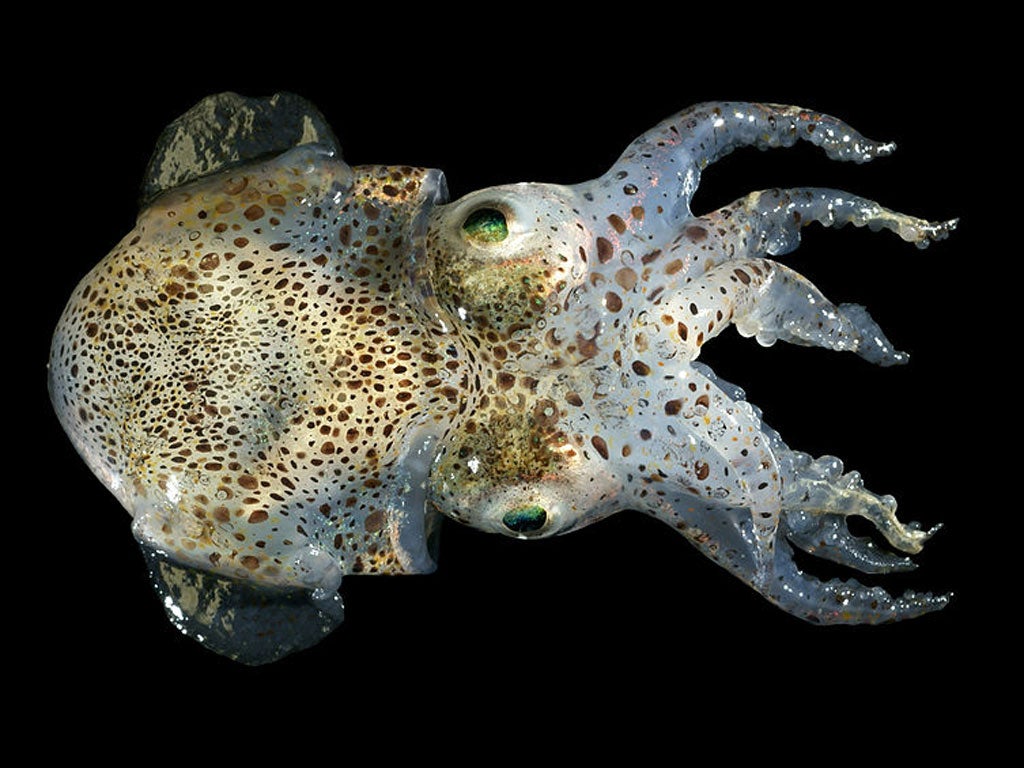Three-hour sex sessions with multiple partners make dumpling squid easy prey
Squid-style sex leaves cephalopods suffering from temporary muscle fatigue

Dumpling squid – named for their rotundness – may not sound like the ocean’s sexiest inhabitants. But to other dumpling squid they are, apparently, irresistible.
The cephalopods spend much of their short lives engaging in three-hour mating sessions with multiple partners, Australian researchers have discovered.
The University of Melbourne team also established that – not surprisingly – the squid are so tired after sex that they can barely swim. This leaves them vulnerable to predators and less able to forage for food, according to the research, published in the international journal Biology Letters this week.
“We found that after mating both male and female dumpling squid took up to 30 minutes to recover to their previous swimming ability,” said Amanda Franklin, a zoology student who led the research. “This suggested that the squid were suffering from temporary muscle fatigue.”
Ms Franklin believes the marathon sex sessions may be related to the squid’s short lifespan of less than a year. Sexually mature for just a few months, they copulate for as long as possible, and with as many partners as possible, in order to produce multiple offspring and pass on their genes.
Mating dumpling squid-style involves little romance. The male initiates sex whenever the opportunity arises, grabbing the female from underneath and gripping her tightly while he transfers his sperm to her – a process that takes up to three hours. During that time, he may change colour, squirt ink and pump jets of water into the female’s mantle, or body.
“At the end, he pretty much throws her off with violent, shaking movements, to detach himself from her,” Ms Franklin told Australian Geographic. The couple then swim off in opposite directions – presumably without exchanging phone numbers.
After sex the male is worn out because of his exertions – while the female is exhausted because the male has been virtually strangling her throughout. While getting their breath back, both burrow into the seabed, camouflaging themselves against the sandy bottom to reduce the risk of attack.
Dumpling squid live in Australia’s southern coastal waters, and reach up to 7 centimetres in length. Nocturnal creatures, they change colour from sandy yellow to dark purple with green and orange highlights when threatened by predators, which include fish and octopus. They also produce a cloud of ink as a decoy to help them escape.
The scientists – who studied squid collected from the shallow waters around Tasmania and Port Philip Bay, near Melbourne – believe their research provides new insight into the evolution of reproductive strategies and behaviours. The study shows for the first time how “the energetic costs of mating … affect physical abilities after mating”, they say.
Male dumpling squid are particularly promiscuous, according to Ms Franklin. “Pretty much whenever he sees a female he will go for it,” she told the Sydney Morning Herald. “If he can get her, then she has to mate with him, as she can’t escape.”
Fatal attraction: Mating rituals to die for
Lynx Spiders
The male spider spins a web and wraps her in silken bonds which act as an aphrodisiac. She eats them, and the male mates with her while she is distracted.
Bed Bugs
Practice a mating ritual termed ‘traumatic insemination’ where the male stabs a hole in the female’s abdomen before inseminating her.
Red-sided garter snakes
Up to 25,000 red-sided garter snakes slither into a den. One female can have up to 100 males trying to mate with her at once and the 2ft ‘nesting balls’ which are formed can crush her to death. The males continue to mate.
Anglerfish
The males bite the females and release an enzyme that fuses the two together. He then wastes away leaving a lump of testes which will fertilize the female’s eggs.
Subscribe to Independent Premium to bookmark this article
Want to bookmark your favourite articles and stories to read or reference later? Start your Independent Premium subscription today.

Join our commenting forum
Join thought-provoking conversations, follow other Independent readers and see their replies